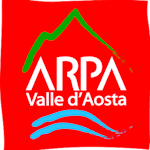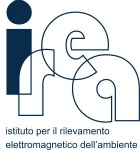SCIA
Development of algorithms for the cryosphere monitoring using PRISMA images
- Deutsch
- English
- Italiano
- Project duration: -
- Project status: ongoing
- Institute: Institute for Earth Observation
Project funded by
The main purpose of SCIA is the development and optimization of methods for the generation of products related to the Cryosphere. The project foresees the development of a robust processing chain of PRISMA hyperspectral data for the estimation of snow and glacier parameters in Alpine areas, through a combined use of satellite images, field data and radiative transfer models, which will also allow to evaluate the quality of the obtained products. SCIA aims at demonstrating that innovative algorithms for the generation of products related to a set of geophysical parameters of the cryosphere in the Alpine environment can be developed using PRISMA data. The image spectroscopy measurements provided by PRISMA will allow to investigate radiometrically complex surfaces and to obtain some geophysical parameters currently achievable only through airborne hyperspectral sensors. The possibility, for example, to recognize the three phases of water and the type of impurities on snow and ice allows to obtain a series of products currently non-existent and characterized by high innovativeness and important potential applications, also in view of the synergies with the next hyperspectral space missions. The proposed research follows the valuable experiences obtained in the context of studies conducted with airborne hyperspectral sensors (e,g, AVIRIS), which have demonstrated the possibility of generating a series of geophysical parameters of the cryosphere with a high level of maturity and credibility of the proposed methodologies. SCIA is articulated in three different phases and foresees a first part of pre-processing of PRISMA L1A data (acquired in different sites and in correspondence of ground campaigns), a phase of optimization/development/validation of algorithms for the generation of products (snow and ice geophysical parameters) and a phase of demonstrative character on the potentiality of PRISMA products for applications related to glacial and proglacial dynamics and snow processes and hydrological modeling, which are two aspects of strategic importance for policies in Alpine areas. The expected results of this project are therefore the development of processing methods and algorithms based on PRISMA hyperspectral data and the understanding of how the generated products can foster cryosphere-related applications. The proposing team consists of EURAC Research, CNR-IREA, UNIMIB, ARPA VDA and the University of California, Los Angeles (UCLA) as a foreign partner. This team has extensive and documented experience in the field of processing multi-source remote sensing, optical hyperspectral, thermal and SAR data for cryosphere-related studies. Responsible person: Claudia Notarnicola Email: claudia.notarnicola@eurac.edu |



